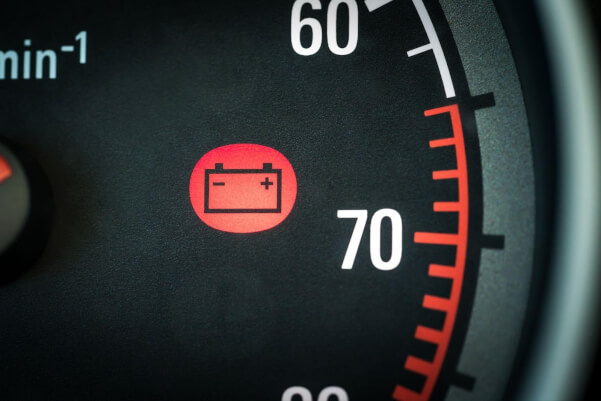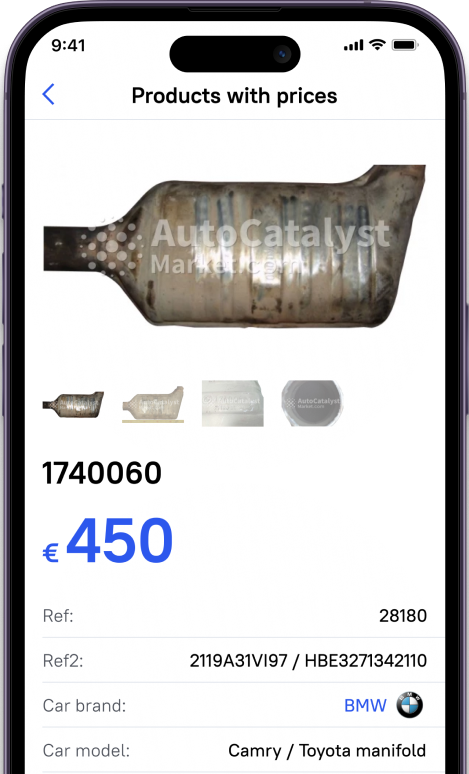- Indication types
- Red Warning Lights
- Yellow Warning Lights
- Blue and Green Warning Lights
- Actuation Lights
- Front and Rear Fog Lights Indicator
- Headlamp Indicator
- Main Beam Indicator
- Cruise Control Indicator
- Directional indicator
- Shift Indicator
- Warning Lights
- Brake System Warning Light
- Engine Coolant Temperature Warning Light
- Transmission Warning Light
- Battery Warning Light
- Engine Oil Warning Light (Oil Pressure)
- Low Fuel Level Warning Light
- Glow Plug Indicator
- Safety Indicators
- Anti-Lock Braking System Warning Light
- Reduced Power Warning Light
- Tires Warning Light
- Stability Control Indicator (Traction Control)
- Catalytic converter warning
- Safety Belt Indicator
- Door Ajar Warning Light
- Front Airbag Warning Light
- Frost Warning Light
Modern automobiles heavily depend on electronic systems, which hinge on sensors connected to the array of alert symbols adorning the dashboard. These sensors diligently observe your vehicle's performance. In the event of a malfunction, your initial notification typically arrives via a dashboard warning light. The multitude of distinctive cautionary lights and indicators might initially overwhelm you. Overlooking crucial warning signals carries the potential of jeopardizing your safety or incurring substantial expenses for vehicle repairs. While there exist dashboard lights common to all automobiles, some cater specifically to the make and model of your car. While most of these car indicators exhibit a uniformity, we will delve into their particulars today. However, if you happen to possess a unique configuration, it's wise to consult your owner's manual for verification. Diverse categories of indications will be explored.
Indication types
When you start a car, you will see some warning lights come on. But do not worry, this is normal because it is just a routine check to show that they are all functioning. If there are warning lights stay on after five seconds of starting the car, then there is a problem.
There are 3 types of warning lights each represented by color.
- Red warning lights
- Orange lights
- Blue and Green operational indicators
Red Warning Lights
Generally, red lights mean there is a severe problem and you should act quickly to resolve it. If it is critical, then it might also flash, then stop your car as soon as it is safe to. Once you have stopped in a safe place, it is time to check your car manually to find out if it is safe to carry on driving.
Yellow Warning Lights
Typically, amber or yellow dashboard lights serve as signals that immediate attention or maintenance is needed. These lights indicate that the engine's computerized management system has identified a malfunction. While it's feasible to continue driving your vehicle with an illuminated orange warning light, it's strongly recommended to promptly schedule a visit to your nearby service center for a thorough diagnosis and necessary repairs.
Blue and Green Warning Lights
If the lights are in green or blue it tells you the system is on and it is operating, so it basically confirms the activation such as your main beam headlights.
Actuation Lights
These are usually Blue and Green lights that indicate that something is running on such as car head and tail lights.
Front and Rear Fog Lights Indicator
When either the front or rear fog lights are in operation, this light will become illuminated.
Headlamp Indicator
This light becomes illuminated when you activate the dipped beam headlights or engage the side and tail lights.
Main Beam Indicator
Upon activating the main beam headlights, a blue dashboard light will make its appearance. This blue light will blink when you employ the headlight flasher.
Cruise Control Indicator
This will be illuminated when you have cruise control on.
Directional indicator
Here are your indicators for signaling left or right turns, or to activate hazard warning lights. They flash when turned on. If the indicators stay on or flash faster than normal then check for a burnt-out bulb.
Shift Indicator
This informs you that changing to a higher or lower gear may give better performance, and help you reduce fuel consumption and CO2 emissions. It will not come on during periods of high acceleration, braking, or if the clutch is pressed down.
Warning Lights
Mostly engine-related indications that warn about severe malfunction or lackluster and many other safety sensors.
Brake System Warning Light
When your vehicle remains stationary with the ignition or engine running, an indicator light will illuminate, signifying that the parking brake is presently engaged. However, if you happen to spot this light while in motion, take a moment to ensure that the parking brake has been fully disengaged. If that's not the issue, it's a red flag indicating either insufficient brake fluid or a malfunction within the braking system. It's possible that hydraulic pressure has dissipated on one side of the brake system, or there may be a perilously low fluid level in the master cylinder due to a potential brake system leak. Should this brake warning light unexpectedly make its appearance in the midst of traffic or while driving, there's no need for alarm. Most vehicles are equipped with multiple hydraulic braking systems, and though it might necessitate slightly more time to come to a complete halt, you can securely maneuver to the side of the road. From there, arrange for your vehicle to be towed either to your residence or to a reliable mechanic for a thorough examination.
Engine Coolant Temperature Warning Light
The warning light associated with engine temperature, also referred to as engine coolant temperature, indicates that your engine is operating at an excessively high temperature, or in simpler terms, it's overheating. Ideally, under proper functioning conditions of your vehicle's cooling system, such a situation should never arise. Nevertheless, a malfunction in the cooling system or insufficient coolant levels can trigger engine overheating, ultimately resulting in damage to the engine. Driving your vehicle while it's in an overheated state can lead to severe, sometimes irreversible, harm to your engine. Therefore, when the temperature warning light makes its appearance, it's advisable to promptly pull over to the roadside when it's safe to do so, turn off your engine, and allow it to cool down. There are some common reasons for that to happen. If the car has too little or no coolant, leakage in the cooling system, a broken water pump, radiator issues or engine oil is too low. Always check your coolant level before driving and store an extra bottle of new antifreeze and a gallon of water in your trunk. Do not overuse the car’s air conditioning on extremely hot days.
Transmission Warning Light
Do not mess Engine temperature symbol with a one similar that has a gears icon around it. This symbol means that your transmission overheats. The ideal temperature here is 175 degrees, overheating occurs after it surpasses 200 degrees and the failure rate doubles for every additional 20-degree increase. Depending on the severity of the problem the indicator appears from yellow to red.
Battery Warning Light
This light serves as an indicator of an inadequately charged or malfunctioning car's power supply system. Typically, it signifies an issue either with the battery itself or the alternator. Upon starting the vehicle, the charging system warning light is expected to briefly appear, but its persistence during your journey can indicate an underlying problem. Several factors could contribute to its illumination, including a faulty or depleted battery, issues with the charging function of the alternator, wiring complications, and more. While it's technically feasible to continue driving with this warning light activated, it's not advisable. An alternator malfunction can lead to a depletion of power in the battery, potentially resulting in a complete power loss. Therefore, it's wiser to conserve power by minimizing unnecessary electrical consumption and promptly arrange for a professional inspection.
Possible fix is to clean any rust of the contacts and then tighten any loose battery cables, if that doesn’t help then you still need to lead to service to check the alternator and wiring.
Engine Oil Warning Light (Oil Pressure)
The presence of this light signifies a drop in oil pressure, indicating a shortage or even a complete absence of lubrication. It's imperative to pull over your vehicle promptly and with utmost care. After doing so, consult the service manual for guidance and employ a dipstick to assess the oil level. Take off and wipe any oil of the dipstick first to refresh then insert it into its tube and then push it back in to see the refreshed oil level and if it needs to be topped off. If the level is correct, it can also be caused by a faulty oil pump, clogged oil filter, or an internal oil leak. It can also be a false alarm caused by a bad oil pressure sensor or its wiring.
Low Fuel Level Warning Light
This light warns you that you have low fuel and to refuel as soon as possible.
Glow Plug Indicator
This is designed for diesel vehicles specifically to preheat the cylinders before you turn the engine over to start it. If this light is on wait until it goes off before starting the car. If it is flashing while you are driving that indicates a fault in the system.
Safety Indicators
Anti-Lock Braking System Warning Light
The ABS system warning light serves as a cautionary signal for the driver, indicating a potential issue with the Anti-Lock braking system. In particular, dedicated sensors keep a watchful eye on wheel speeds. If any of these wheel speed sensors fail to operate or exhibit defects, the ABS warning light will persist in its illuminated state. The same applies if there's an issue with the wiring. The symbol will look like the letters ABS surrounded by two circles with the top and bottom of the outer circle cut off.
ABS, in the event of sudden, forceful brake pedal application during emergencies or on slippery terrain, safeguards against wheel lock-up. Your standard braking system remains operational unless the brake system warning light is concurrently lit. In such a scenario, it's advisable to seek a prompt inspection.
Reduced Power Warning Light
If this is on when the engine is running then there is a malfunction. Your car will continue to run but it has limited power. This measure is needed to prevent permanent engine damage from occurring. The computer in your car, also known as ECU, has triggered the reduced power mode after it has detected a system failure. One of the most common triggers is a problem with the electronic throttle actuator control system. Some cars may light this message because of a faulty electronic fan clutch but some other cars may show this light due to a problem with a fuel system. If it flashes when you are driving then slow down as soon as it is safe to. If it continues to flash then avoid heavy acceleration or deceleration. Try to restart the engine and see if the indicators are off or appear blinking again. If the issue persists, check your car immediately.
Tires Warning Light
The glowing indicator serves as a warning that one of your tires is experiencing reduced pressure, dipping below the 25% threshold. When this light illuminates, it suggests a potential issue with under-inflated tires. Nonetheless, it's advisable to employ a gauge for a precise assessment of the root cause behind the pressure drop.
Stability Control Indicator (Traction Control)
This flashes when the stability control is operating. If this light stays on continuously while driving then there is a malfunction. It has 2nd state in case you switched the stability control off manually, it adds the OFF sign beneath.
The illuminated indicator signifies the deactivation of your vehicle's traction control. This mechanism's purpose is to facilitate a more gradual and controlled acceleration for your car. It operates by means of a computer that discerns if one or multiple wheels have started to slide and lose their grip on the road surface. Traction loss is frequently encountered in snowy weather, where a spinning wheel encounters an icy patch, leading to slippage. In response to such situations, the traction control system redistributes power from the slipping wheel to those that maintain traction, ensuring steadier and safer movement.
Catalytic converter warning
An indicator light that means the cat converter is either overheating or not operating as intended. This is caused by the metal can start deteriorating over time and plug up the honeycomb cells inside the device leading to overheating issues caused by restricted airflow.
Safety Belt Indicator
If you neglect to fasten your seatbelt, you'll notice the emergence of a visual indicator, accompanied by an auditory reminder. In the contemporary automotive landscape, all vehicles feature seatbelt sensors as a vital safety measure. These sensors are responsible for evaluating the status of your seatbelt – whether it's securely fastened or left unbuckled. This information is crucial for the passenger safety system, especially in determining the most appropriate deployment of airbags. Furthermore, the system springs into action if it detects an unbuckled seatbelt while the car is in motion, traveling at speeds exceeding 15 miles per hour. If, upon fastening your seatbelt, it continues to flash, it's indicative of a malfunction in the seatbelt sensor or possible damage to the buckle housing. In such cases, replacement becomes necessary.
Door Ajar Warning Light
You will see this light if the bonnet, boot, or any door has not been closed properly.
Front Airbag Warning Light
If this does not go off or flashes once you have started your car, then get it checked.
Frost Warning Light
You will see this light when the outside temperature is 4 degrees or below to inform the driver that ice may start forming. As the temperature goes below the freezing point it turns red to warn you about increased chances to meet the ice on the road.






























































